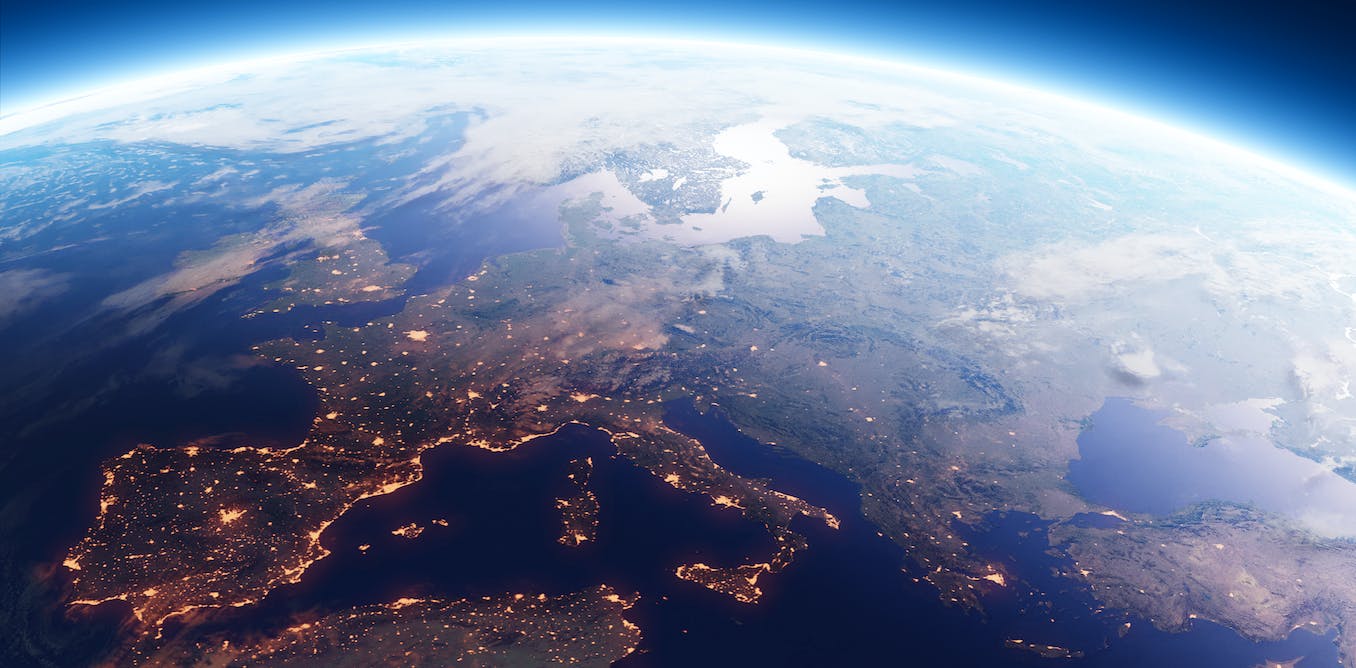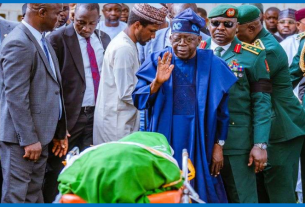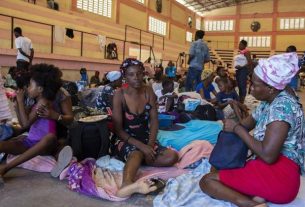|
Getting your Trinity Audio player ready...
|
Science fiction has always been a tool for processing life on Earth. Norwegian sci-fi expert Karl Kristian Swane Bambini has said that the space-bound genre is well placed to “interrogate and reimagine real-world economic disparities”.
He gives the examples of, among other things, the 2013 blockbuster Elysium, wherein healthcare is only accessible off-world, to people with spaceships, and Kim Stanley Robinson’s 1990s Mars trilogy of novels, which opposes the egalitarianism of a Martian society to Earth’s capitalist dystopia.
Regional development is about tackling spatial injustice – that is, regional inequalities. Doing so, though, isn’t just about measuring the difference between today’s haves and have-nots to determine whether that gap might narrow or widen.
Our idea of what is fair changes over time. Circumstances change, too. New inequalities emerge.
My colleagues and I at the Imajine project were tasked with exploring spatial justice across Europe and the UK: whether different regions are treated fairly.
lavizzara/Shutterstock
We created four scenarios, set in 2048, to help policymakers come up with new ways to combat regional inequality. In devising these scenarios, we found that outer space isn’t only useful as a literary device.
Real future activity in outer space actually has significant potential to affect regional inequality back on Earth.
Four scenarios for Europe’s future
Our first scenario is labelled Silver Citadel. It posits that by 2048, Europe has formed a single bloc. Politically, populism has given way to pan-European solidarity, with policies made by centralised artificial intelligence.
The EU is now a big player in outer space. Environmental protection on Earth is prioritised as crucial to economic growth and the bloc is relegating polluting industries to orbital locations and beyond.
The economic benefits of these activities are shared out automatically among the bloc’s members. But for individual regions to gain any advantage, local politicians have to figure out how to game the AI-led system and be included in centralised decision-making.

FTiare/Shutterstock
In the second scenario, Green Guardian, climate catastrophe forces the world to refocus on sustainability and survival. As a result, the rural-urban divide has reversed, with metropolitan areas in decline while the countryside thrives. In this world, economists no longer prioritise profit and net worth. Instead they focus on wellbeing and fair share.
Satellite-enabled tech is increasingly valuable, with space activity strictly regulated. Climate data gathered in environmental research helps better-off regions to assist those which are suffering the most. Space-based nuclear power is on the rise and outer-space geopolitics ever more complex.
In Silicon Scaffold, the third scenario, Europe is highly fragmented into city-states and other jurisdictions. Transnational corporations have taken over much of the role of government.
People can now be citizens of virtual spaces as well as physical nations –- including digital jurisdictions hosted in outer space. Regional inequality has become a question of which privatised platforms citizens can live, work and play in – and outer space is crucial in enabling life in the digital space.
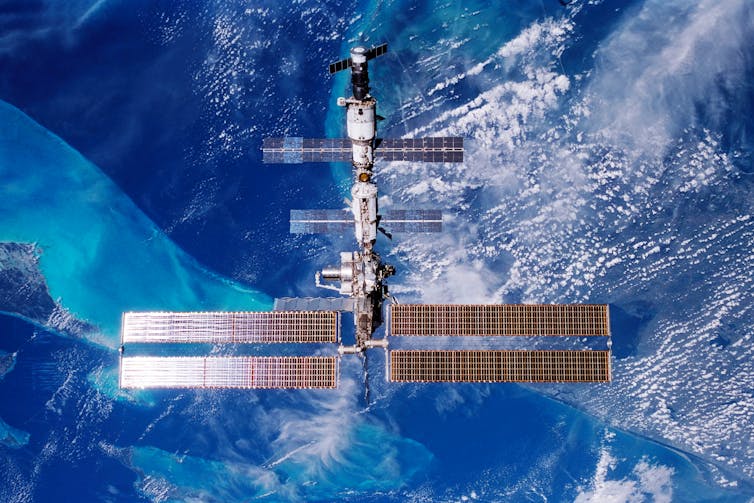
Artsiom P/Shutterstock
Wealthier regions and cities are governed by intense self-interest. In poorer regions, there is a return to traditional exploitative activities including heavy industry and intensive farming. The corporations, meanwhile, increasingly devise new ways to relocate their destructive or pollutant activities to more remote locations on Earth and in outer space.
Finally, the fourth scenario, labelled Patchwork Rainbow, sees Europe fragmented under the weight of mutual mistrust and diverging cultural values. Local communities seek international sponsors to help them prosper. And the private sector’s influence extends into outer space.
The space race becomes a question not just of which countries, but which regions, have the ability to operate off-planet. Conflict on Earth spreads to outer space. Further inequality stems from who can access space, and benefit from space knowledge.

Apiguide/Shutterstock
Implications for the present
The scenarios extend across the UK and the European Union but are grounded in the work of the European Union’s Directorate-General for Regional and Urban Policy (DG-Regio), which is responsible for disbursing regional development funds to many institutions and communities. Even after Brexit, British development funds were being compared to the amount DG-Regio would have spent on UK regions.
We set these scenarios in the year 2048 – that is, four of DG-Regio’s seven-year funding cycles from the project’s start date. To build them, we mapped out the institutions and communities with which DG-Regio interacts and explored the uncertainties shaping their decisions. These include climate change, technological advances including AI and space travel, shifts in social values and geopolitical tensions.
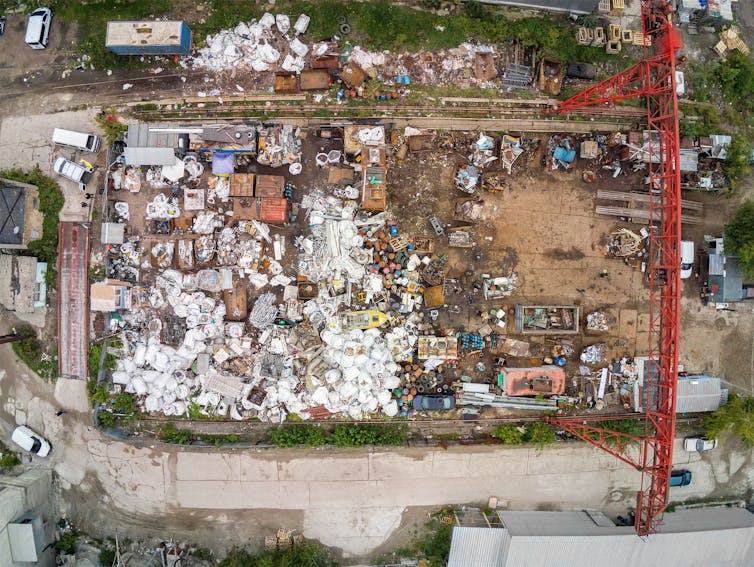
Gorloff-KV/Shutterstock
Our scenarios are not predictions of what will happen, nor are they visions of what we’d like to see. They are plausible futures, designed to challenge assumptions about what lies ahead for Europe’s regions. They help us rethink whether the future will play out in the way we currently expect.
The perspective they provide helps to better assess our changing context today, in particular by amplifying weaker signals of potential change in our environment – those that are new or as yet unrecognised. They identify activity in outer space as one such signal.
Research on space economics has found that the sustainability and environmental impact of space activity is already an urgent global challenge.
Satellite services like Starlink are increasing digital access for remote regions. This could have knock-on effects for the expansion of telehealth, improving healthcare provision across Europe.
As we use ever more data to monitor climate impacts, access to satellite coverage might also become a deciding factor in the quality of response to new disasters, and the safety of local communities.
In the UK, Cornwall and the Scottish Highlands have competed for new spaceports to kick-start economic development. Sweden, meanwhile, recently inaugurated the Esrange spaceport, near Kiruna in the Arctic, ahead of its first satellite launch planned for March 2024.
And further spaceports are under construction on Andøya in Norway and on Santa Maria, in the Azores archipelago of Portugal.
Savvy regional leaders elsewhere may similarly look to the space sector for their community’s next opportunity. Local people will need to consider how they have their say.
As more nation states and corporations enter the space race, their activity will impact the regions down below. The economic sociologist Marc Ventresca puts it plainly:
It’s no longer just about launching rockets to explore the cosmos. It will increasingly be about solving problems back on Earth. Or as some people might say: ‘There’s space for space. And there’s space for Earth.’
